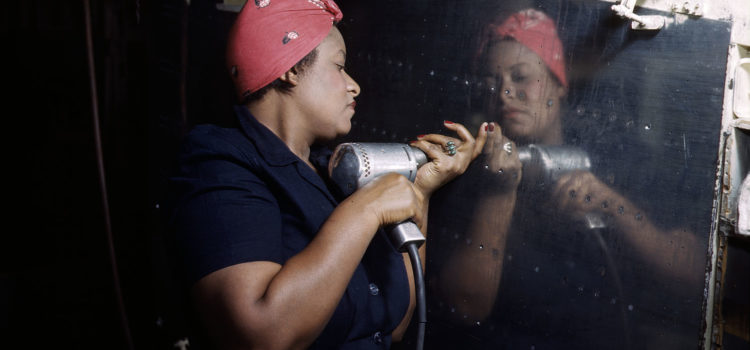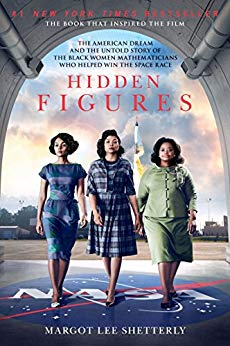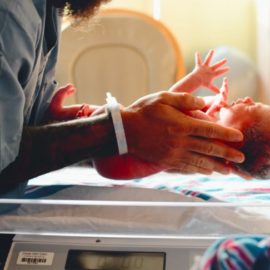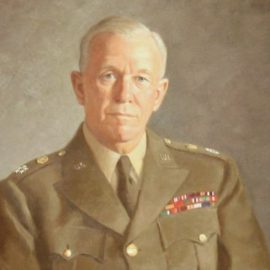

This article is an excerpt from the Shortform summary of "Hidden Figures" by Margot Lee Shetterly. Shortform has the world's best summaries of books you should be reading.
Like this article? Sign up for a free trial here .
How did women contribute to the war effort during World War II? What role did NASA play in these efforts?
NASA, then known as NACA, was responsible for science and technology that helped build planes and other machinery. The work had real-life, high-stakes implications. It was also an opportunity. You probably know that women were a huge part of the war effort during World War II. But how did women contribute to the war effort at NACA? Keep reading to find out.
With Men Overseas, Women Became Human Computers
You probably have seen pictures of women working at shipyards during World War II, or working as nurses. But how did women contribute to the war effort at NASA? At the height of the war in 1943, the National Advisory Committee for Aeronautics (NACA), which operated the Langley Memorial Aeronautical Laboratory, was the US government’s main agency for civilian aeronautics research. NACA was crucial to the war effort, as its research informed airplane design decisions being made by the US Army Air Corps. Thus, the researchers, scientists, and engineers at NACA knew that their work had major real-world implications.
By disseminating their knowledge with the military, the men and women of NACA were helping the US create the fleet of bombers and fighter planes that would defeat Nazi Germany and Imperial Japan. Almost every new aircraft model during the war years was tested at Langley—and with President Franklin Roosevelt’s challenge to have the nation produce over 50,000 aircraft per year, this was indeed a tall order for NACA. “Victory through airpower!” was the guiding mission and mantra of the NACA-ites.
With so many men serving overseas and the unceasing labor demands of the wartime economy, government facilities like Langley began to hire women in large numbers to work as mathematicians and computers. Aeronautics was an intensely quantitative field: designing and testing combat planes produced a deluge of numerical data that needed to be processed and analyzed. And that meant hiring an army of number-crunchers. The need for more labor and talent meant looking outside the usual pool. Today, when you think about the question “how did women contribute to the war effort?” consider the many roles they filled that allowed them to also seize upon opportunities at places like NASA.
(Shortform note: In this era before electronic computers, the word “computer” typically referred to an individual who performed mathematical calculations. Throughout the summary, when we say “computer,” we are referring to a human being, not a machine.)
Women had been working as computers at Langley during the 1930s, but how did women contribute to the war effort? They would take on a far greater role at the laboratory during and after the war. By 1941, personnel officers at the lab were eagerly searching for more and more women (or “girls” as they were called at the time) to fill the new positions at Langley. Hiring agents scoured the East Coast for coeds who had any sort of mathematical background and placed job advertisements in newspapers in their endless quest for new talent.
West Computing Group
At the same time, African-American leaders like A. Philip Randolph, head of the largest black labor union in the country, were pressuring the Roosevelt Administration to open up coveted jobs in the defense industry to black applicants. With two executive orders in 1941, FDR banned discriminatory hiring practices in the defense industry and opened the door for African-Americans to contribute to this growing and dynamic sector of the economy for the first time. This was what enabled black women to submit their applications to work at Langley—it was just a crack, but the door to opportunity was slowly starting to open, and would later be a crucial turning point when we ask ourselves the question of how did women contribute to the war effort.
Melvin Butler, the lab’s chief personnel officer, was a native Virginian who had grown up in the world of Jim Crow, but was also inherently practical and recognized the urgent need for new mathematical talent. While he recognized there would need to be a segregated space for the new black women, he also ensured that nothing was done to inhibit their arrival. The women would work in the warehouse building on the west side of the laboratory campus: the place would become known to history as West Area Computing.
The research and innovation coming from Langley played a major role in the ultimate Allied victory in World War Two, which finally came when Japan surrendered on August 15, 1945. But how did women contribute to the war effort at NASA? Although few Americans knew it, a small contingent of black female computers had made vital contributions to the superior aircraft production that had enabled the Allies to defeat Nazi Germany and Imperial Japan.
But while the end of the war ushered in a nationwide wave of euphoria, it was a source of anxiety for Langley computers like Dorothy Vaughan. Their contracts had only guaranteed employment for the duration of the war. Now that the war was over, what lay ahead for the black computers of Langley? Would the extraordinary opportunity they’d been given be taken away?
“How did women contribute to the war effort?” is a fascinating question, partly because women turned out in high numbers to support the war, but also to seize the once-in-a-lifetime opportunities available to them. Many women left or were forced out of their jobs following the war, but some, like Hidden Figures icon Dorothy Vaughan, stayed on and rose through the ranks of NASA, and were regarded as one of its most brilliant minds.

———End of Preview———
Like what you just read? Read the rest of the world's best summary of Margot Lee Shetterly's "Hidden Figures" at Shortform .
Here's what you'll find in our full Hidden Figures summary :
- How brave black women were instrumental to the American space race
- How they confronted racism and sexism to forge a better future
- Their enduring legacy in American history






